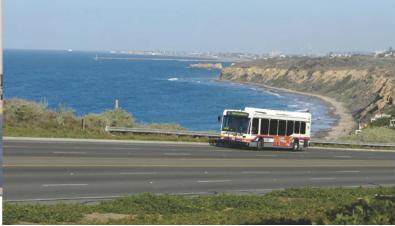
 As America moves toward construction of new high-speed rail networks in regions throughout the country, we have much to learn from experiences abroad.
As America moves toward construction of new high-speed rail networks in regions throughout the country, we have much to learn from experiences abroad.They base their report on the track record of high-speed rail lines that have operated for more than 45 years in Japan and for three decades in Europe -- with some exciting conclusions.
The number of air passengers between London and Paris has been cut in half since high-speed rail service was introduced.High-Speed rail service between Madrid and Seville reduced the share of car travel between the two cities from 60% to 34%, and service between Madrid and Barcelona, once the world's busiest passenger air route, has been cut by one-third.

granted.
To travel independently, a transit rider practices at least 23 skills including finding the route, arriving at the correct stop on time, and determining when to exit at destination.
The University of South Florida's National Center for Transit Research has published Travel Assistance Device Deployment To Transit Agencies (103p. PDF) which discusses the successful deployment of devices assisting those with cognitive challenges in these tasks.
Travel trainers who provide one-on-one instruction on public
transportation, report that recognizing a landmark near the desired bus stop, requesting a stop at the proper time, and exiting the bus at the destination stop are among the most challenging skills to master for individuals with cognitive disabilities.
Parents/guardians are often reluctant to encourage the use of fixed-route transit due to their own hesitations about a person's abilities and well being.
Prior studies by the research team developed the Travel Assistance Device (TAD)
mobile phone software application that addresses these challenges and supplements the trainer’s instruction.
TAD provides various informational prompts including the audio messages “Get ready” and “Pull the cord now!” and vibrates to alert the rider to pull the stop cord. These prompts are delivered to the rider in real-time as he or she rides the bus using the embedded global positioning system (GPS) technology in off-the-shelf cell phones.
TAD’s real-time location of the rider can be viewed by the travel trainer or family member through a Web page.
This document reviews how the TAD application has been successfully deployed in the Hillsborough (FL) Area Regional Transit (HART) bus system.
.jpg)










































